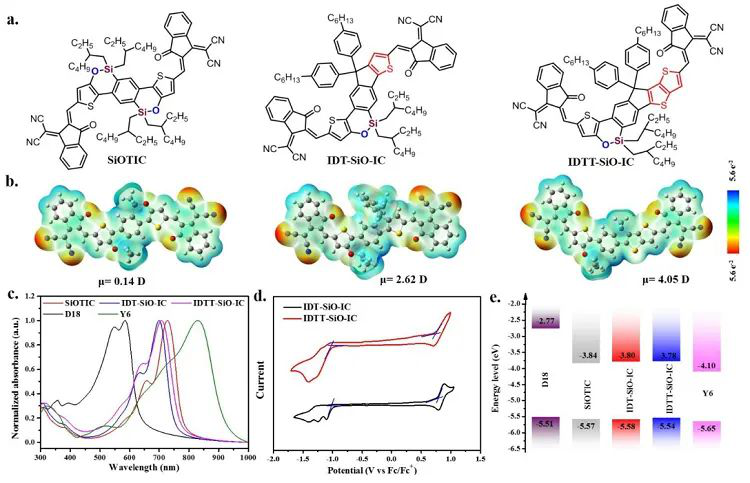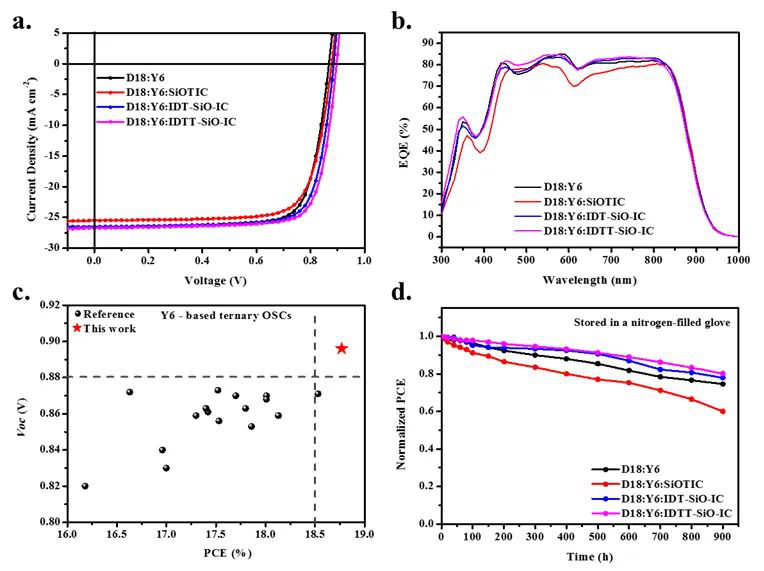Organic solar cells (OSCs), which represent one of the most promising next-generation clean energy sources owing to their unique advantages, such as flexibility, lightweight, and fine tunability rooted in the structural versatilities of organic molecules, have gained considerable attention from the academic and industrial communities. The power conversion efficiencies (PCEs) of OSCs have recently reached over 19 %, which have benefited from the recent development of nonfullerene acceptor Y6 and its derivatives. However, the deep-lying lowest unoccupied molecular orbital (LUMO) of Y6 and its derivatives generally leads to a relatively low open-circuit voltage (Voc) for binary-based OSCs. The Voc of the current state-of-the-art binary OSCs is still below 80 % of the Shockley–Queisser (SQ) limits, which is considered one of the main obstacles in the further improvement of their efficiencies.
Recently, collaborated with Ke Gao's group in Shandong University, Dongbing Zhao’ group developed novel structural hybridized non-fullerene small molecule acceptor materials and successfully applied them to ternary organic solar cells, achieving a photovoltaic conversion efficiency of 18.77% which was one of the highest efficiencies available. The work highlights the importance of structural hybridization of five-membered carbon and silicon-oxygen bridges and the unidirectional extension strategy of conjugation degree in the fabrication of high-performance stable The work highlights the importance of the hybridization of five-membered carbon and silicon-oxygen bridge structures and conjugation degree unidirectional extension strategy in the fabrication of high-performance and stable OSCs which provides new ideas for the development of novel guest acceptors. Relevant achievements were published in Angew. Chem. Int. Ed., 2023, DOI: 10.1002/anie.202217173.

Figure 1. Related receptor structures and photophysical properties

Figure 2. Comparison of related device performance